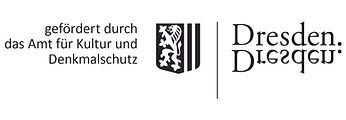TOBIAS IZSÓ
THE ACCOUNTANT
—
18.10.2025 - 10.01.2026
Opening 17.10.2025 19:00h
Curated by: Eva Slabá
Artist talk with Tobias Izsó and Eva Slabá 18.10.2025, 11:00h
Opening hours: Thu/Fri 4pm-8pm, Sat 12pm-4pm and by appointment
Film screening November 7, 2025, 10:00 PM: "Queer as Punk," directed by Yihwen Chen, documentary, Malaysia, Indonesia 2025, 88 min, followed by a film discussion at the Thalia Cinema Dresden. In cooperation with MOVE IT! Film Festival for Human Rights.


In his installation for Kunstverein Dresden, Tobias Izsó (1997, Vienna) creates a sculptural environment that oscillates between material contradiction and social construction. Assamblages and objects are displayed throughout the exhibition space as if they had slipped out of someone's diary – enigmatic items of personal inventory, some deeply private, others very public. They complement each other, contradict each other, mirror each other, and mock each other, but they always form a visual, narrative, and contextual network of relationships that have yet to be discovered by the viewer. With their silent presence, the sculptures seem to act as witnesses to the events of Herman Melville's short story Bartleby, the Scrivener (1853) – an atmosphere in which we feel someone's presence even though we are not communicating with them directly, as if Bartleby was around every corner of his office. This ambivalent situation can be summed up in the narrator's words: "I never feel so private as when I know you are here."
Izsó’s practice revolves around interconnection, whether formal or metaphorical. He navigates the tension between soft and rigid, body and shell, public routines and domestic rituals. Starched shirt cuffs, sagging belt veneers, an empty briefcase, or an outstretched, more-than-life-size sock, each of these objects subverts expectations not only in terms of their material, but above all in terms of what is socially expected of them. Wood bends into absurd zippers, textiles stiffen into wooden husks, and functionality dissolves into poetic defeat. The mundane and familiar turns uncanny evoking a stillness, passivity or even paralysis akin to Bartleby's famous phrase from the book “I would prefer not to” at the heart of bureaucratic order. Barleby's refusal is a refusal where the carefully constructed boundaries between private and public collapse – what at first glance appears representative, polished, and proper at second glance (or in the backroom) becomes uncertain and hesitant.
The accountant emerges here less as a profession than as a figure of alienation and moral ambiguity. Wooden shirts stacked together with documents like chimneys or „seated column of clerks“ suggest a fragile architecture of discipline; a discipline held together until it buckles. The briefcase, emptied of its value, becomes a container of absence, a missing link of belonging, or an echo of Vermeer’s pearl earring: what counts as precious and useful, and to whom? Zippers register as sites of agony, moments where closeness and intimacy falter. Scale and dimension play a crucial role in Izsó’s practice. Objects oscillate between the monumental and the ordinary, the rigid and the limp, resulting in the collapses of hierarchy, whether in material or meaning. At times they ridicule their own anthropomorphic qualities, as though objects themselves were burdened with human traits, longing, or failure.
Izsó’s long-standing engagement with interior spaces, office and café-like, and the inherited rituals of everyday life is deeply rooted in the displayed works and its conscious subversion. Elements of past epochs appear as photographic illusions or fragments re-situated in the present. Their surfaces carry both historical comfort and contemporary dissonance as in exposing bourgeois habits such as sitting with a newspaper holder in cafés or carefully managing one’s appearances as hinted by shelved toupee. Money laundering, like trying to hide dirty linen, leads to situations reminiscent of the structure of fragile veneers, which become adaptable by mimicry on the surface.
What emerges is not resolution but friction: a resistance and polarity, where familiar surfaces are destabilized, where absence asserts presence, and where order is revealed as both necessary and absurd. Izsó’s sculptural language neither smooths nor explains, but instead insists on the interplay of social codes, cultural memory, and the quiet, haunting mechanics of identity and belonging, where the skeletons of his artworks function as a parable – a site of narration about the ambivalent spaces we inhabit together and in which we carefully construct our personalities. (Eva Slabá)
This project was funded by the Bundesminisetrium Wohnen, Kunst, Kultur, Medien und Sport, the Amt für Kultur und Denkmalschutz der Landeshauptstadt Dresden, the Stiftung Kunst und Musik für Dresden and Bildrecht, and supported by the Osterbergstiftung.




We express our gratitude for the loan:
Private Collection, Baden (Austria)
Liesenfeld/Jordan Collection (Austria)
Private Collection, Vienna (Austria)